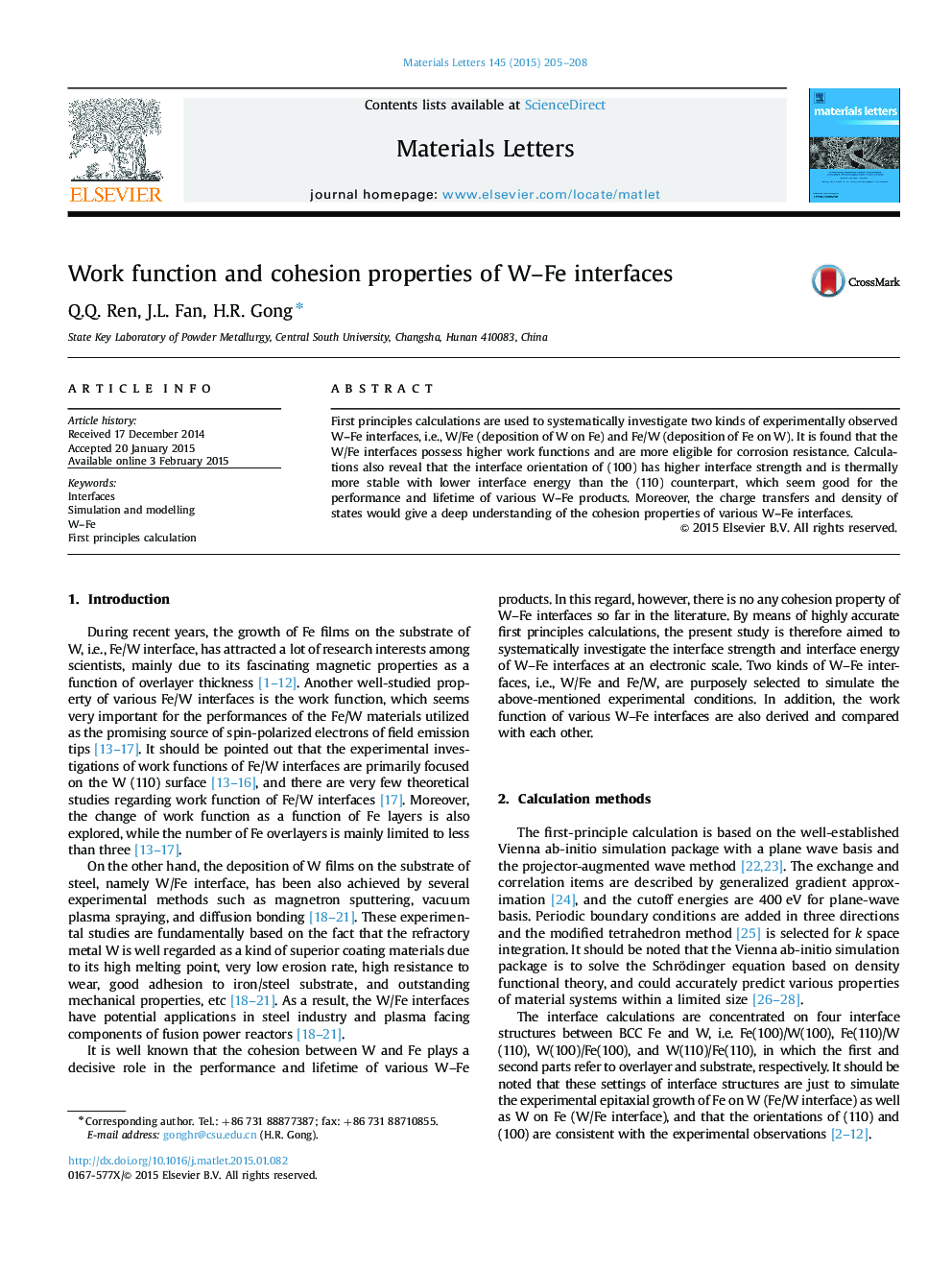| Article ID | Journal | Published Year | Pages | File Type |
|---|---|---|---|---|
| 1643006 | Materials Letters | 2015 | 4 Pages |
•Two kinds of experimentally observed W–Fe interfaces are calculated.•W/Fe interfaces possess higher work functions than Fe/W.•Interface orientation of (100) has higher strength and stability than (110).•Electronic structures could give a deep understanding of interface properties.•Calculated results agree well with experimental observations.
First principles calculations are used to systematically investigate two kinds of experimentally observed W–Fe interfaces, i.e., W/Fe (deposition of W on Fe) and Fe/W (deposition of Fe on W). It is found that the W/Fe interfaces possess higher work functions and are more eligible for corrosion resistance. Calculations also reveal that the interface orientation of (100) has higher interface strength and is thermally more stable with lower interface energy than the (110) counterpart, which seem good for the performance and lifetime of various W–Fe products. Moreover, the charge transfers and density of states would give a deep understanding of the cohesion properties of various W–Fe interfaces.
